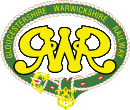British Railways first placed an order for 42 Class 37 locomotives with the English Electric Company Limited in January 1959 – a somewhat bold move at the time as there was no prototype. The first of these (D6700) was delivered in November 1960, entering service on 2 December, with the last of this original batch of 42 complete by mid-1962. Following the initial success of the design (in contrast to a number of other ‘pilot scheme’ diesel designs), 7 subsequent orders followed, eventually resulting in 309 locomotives in total, reflecting the immediate success of the design. The first 4 orders for 119 locomotives (D6700-D6818) – the ‘first series’ – were built to a body design incorporating centre interconnecting doors (intended to facilitate crew access between locos when coupled together, but in practice seldom if ever used) and split headcode boxes either side of these. The final 3 orders for the remaining 190 locomotives (D6819-D6999 and D6600-D6608) were built to an improved design which externally removed the centre nose doors and allowed a central head code box to be fitted. Internally, various minor improvements were also made to the electrical control circuits. These were known as ‘second series’ locomotives.
D6915 was part of the first order of 100 (CCP1304) second series locomotives placed in July 1962 to BR Design Diagram DE3003/2 fitted with a Clayton RO2500 MkII steam generator and train vacuum brakes. It was constructed at English Electric’s Vulcan Foundry at Newton-le-Willows and allocated EE Works Number 3393/D859. Delivered to Swansea’s Landore depot (code 87E) in December 1963, it was accepted into service on 1st January 1964.
D6948 was part of the final order (CCS1362) for 70 locomotives (D6939-D6999 and D6600-D6608) placed in February 1964. It too was constructed in the Vulcan Foundry, Newton-le-Willows and was allocated EE Works Number 3505/D936. Delivered to Cardiff Canton depot (code 86A) in October 1964, it entered service on 30th October 1964.
Whilst at Crewe Works for final commissioning, it had been decided that the batch of locomotives from this order destined for South Wales, as they would be almost exclusively be used on freight work, would surrender their intended Clayton steam generators to Brush class 47 locomotives also being built in Crewe at the time and for which the Clayton RO2500 was more technically suitable. As a result, the steam generators went into class 47s D1901-D1947, D1977 -D1999 and D1100 all of which subsequently went into service on the Eastern Region. D6948 therefore entered service to BR Design Diagram DE3003/3 – meaning a second series locomotive, equipped with train vacuum brakes and no train heating boiler.
Both D6915 and D6948 were also fitted with Western Region automatic train control (a fixed contact ramp under the loco) and WR pattern lamp brackets.



